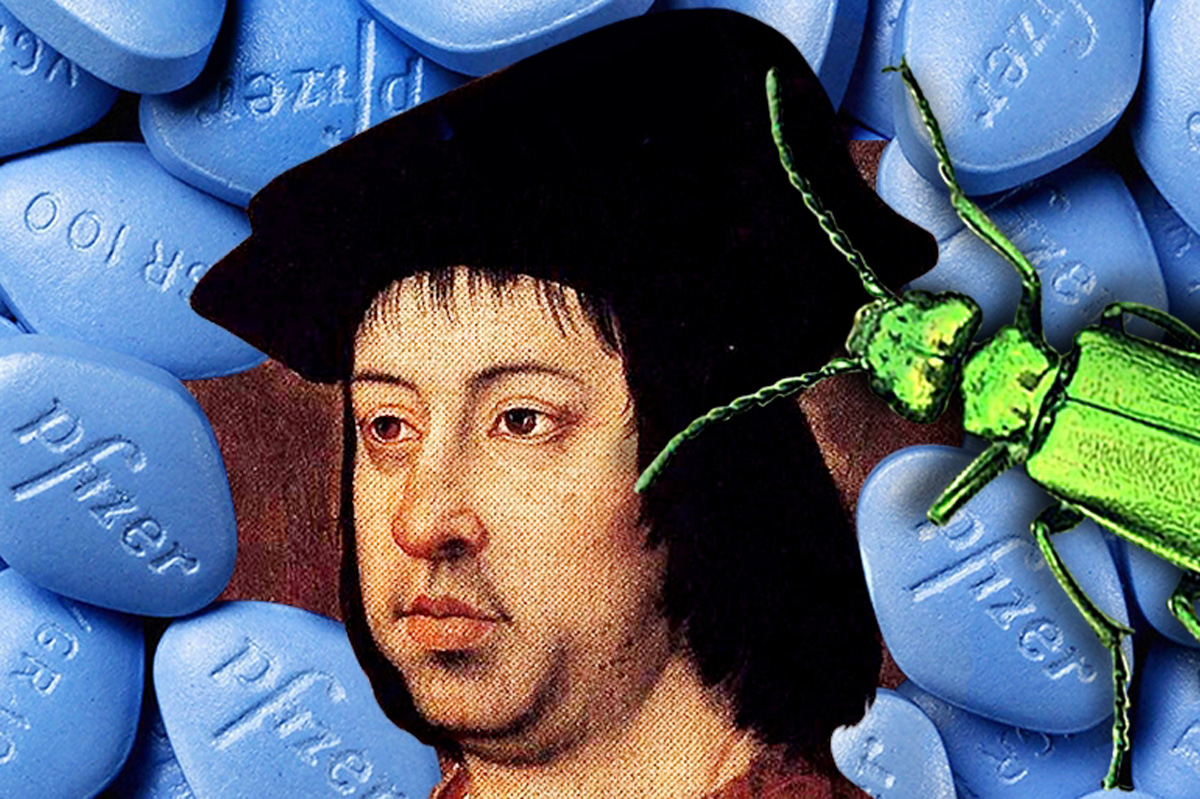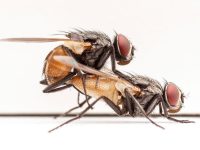Was King Ferdinand the Catholic’s death caused by an aphrodisiac?

VICENT BAYDAL and ALBERT MASÓ answer:
«According to Lorenzo Galíndez de Carvajal –a lawyer and royal counsellor close to King Ferdinand who travelled constantly with him– there were at the time some who claimed that the king’s death was linked to the ingestion of herbs or some kind of potion supplied by two courtesans of Queen Germana de Foix to increase his sexual potency so that she became pregnant. Thus, according to his Memorial o registro breve –annals of noteworthy actions by the Catholic Monarchs–: “In truth his disease was water retention together with a heart condition, although some wanted to link it to herb ingestion, because he broke his jaw. But we can be sure of none of these things, only that many believed that a disease came upon him after he was fed in Carrioncillo, near Medina, with a potion to increase his potency; because afterwards, when arriving in Medina on Friday, he felt unwell. Doña María de Velasco, Juan Velasco’s wife –Tax Office Official– and Doña Isabel Cabra –a queen maid– supplied the potion after queen Germana, who was his second wife and wanted very much to bear him a child because succession to the crown of Aragon was at stake, consented», explains Vicent Baydal.
«The point is that Isabella died in November 1504 and barely a year later, at age 53, Ferdinand married Germana de Foix, who was 17 and niece of the king of France. Had they produced any offspring, their heir would have accessed the throne of the Kingdom of Aragon and the Kingdom of Naples, so the union between Aragon and Castile would have been merely provisional. That is why queen Germana tried by all means to have children with Ferdinand during the ten years of their marriage until his death in January 1516. But she did not succeed and both the Crown of Aragon and the Crown of Castile, were inherited by the Catholic Monarchs’ grandson Charles, the Holy Roman Emperor, while Germana became viceroy of Valencia in 1523 after the Germanies Revolt, or Revolt of the Brotherhoods. It is quite likely, due as much to the age difference as to the two monarchs’ will to procure their own common offspring, that King Ferdinand had invigorating potions while married to Germana de Foix, as contemporary witnesses claim. And in this regard, one of the best known and widely used invigorating potions at the time was indeed made from Spanish fly, which was not a herb –although it could be mixed with them– but a beetle reduced to powder, whose vasodilator poison can cause spontaneous erections as well as varied side effects such as kidney problems that cause swellings like the ones king Ferdinand suffered from. In short, it is likely that the monarch ingested Spanish fly powder as an aphrodisiac and some people close to him linked these potions to his death, but we do not have strong evidence beyond the rumour of that cause-effect relationship. Moreover, we must bear in mind that King Ferdinand died at about 64, a relatively old age for the time,» concludes the historian.
And from the biological point of view, is it possible that king Ferdinand died because of the ingestion of these potions? Albert Masó answers: «If King Ferdinand took invigorators for a decade or part of it, which is almost certain due to the imperative “reason of state” of producing an heir, it is likely that he had Spanish fly, commonly used in the sixteenth century for that purpose. What is it, then? Its scientific name is Lytta vesicatoria. But it is not a fly nor Spanish! It is a beetle that belongs to the family of meloidae. That is, a small beetle with bright colours –golden and green–, which warns of its toxicity. It has cantharidin, a substance used as a pheromone in other beetles. However, our object of study uses it for defence: if a predator eats it, it will poison the eater. Hence its vivid (aposematic) coloration, which clearly warns of its danger and thus avoids the attack of those that have been already warned».
The biologist explained that «in the Middle Ages, these beetles were mounted and then pulverized, obtaining a “magic matter” with alleged aphrodisiac qualities; it was like “medieval Viagra.” The explanation is that one of the effects of this poison is vasodilation, which causes more blood to enter the corpus cavernosum penis, resulting in a spontaneous and prolonged erection. Now this does not mean that it is actually an aphrodisiac, nor that it increases the likelihood of pregnancy. However, its biggest problem is not what it does, but its side effects. Aside from causing rashes if applied to the skin, when ingested, it causes oedema (water retention), abdominal pain, urinary tract irritation (presence of blood in urine), and, depending on dose, severe alterations in the gastrointestinal mucosa as well as permanent kidney damage. We must remember that the LD50 (lethal dose for 50% of the population) is 0.5 mg / kg. If a person of 80 kg takes four hundredths of a gram of cantharidin, this person has a 50% chance of dying. There is no need to get close to one gram to ensure a fatal outcome».
Vicent Baydal. PhD in History and researcher at the Pompeu Fabra University (UPF), Barcelona.
Albert Masó. Bilogist, writer, professor and nature photographer (Barcelona).





